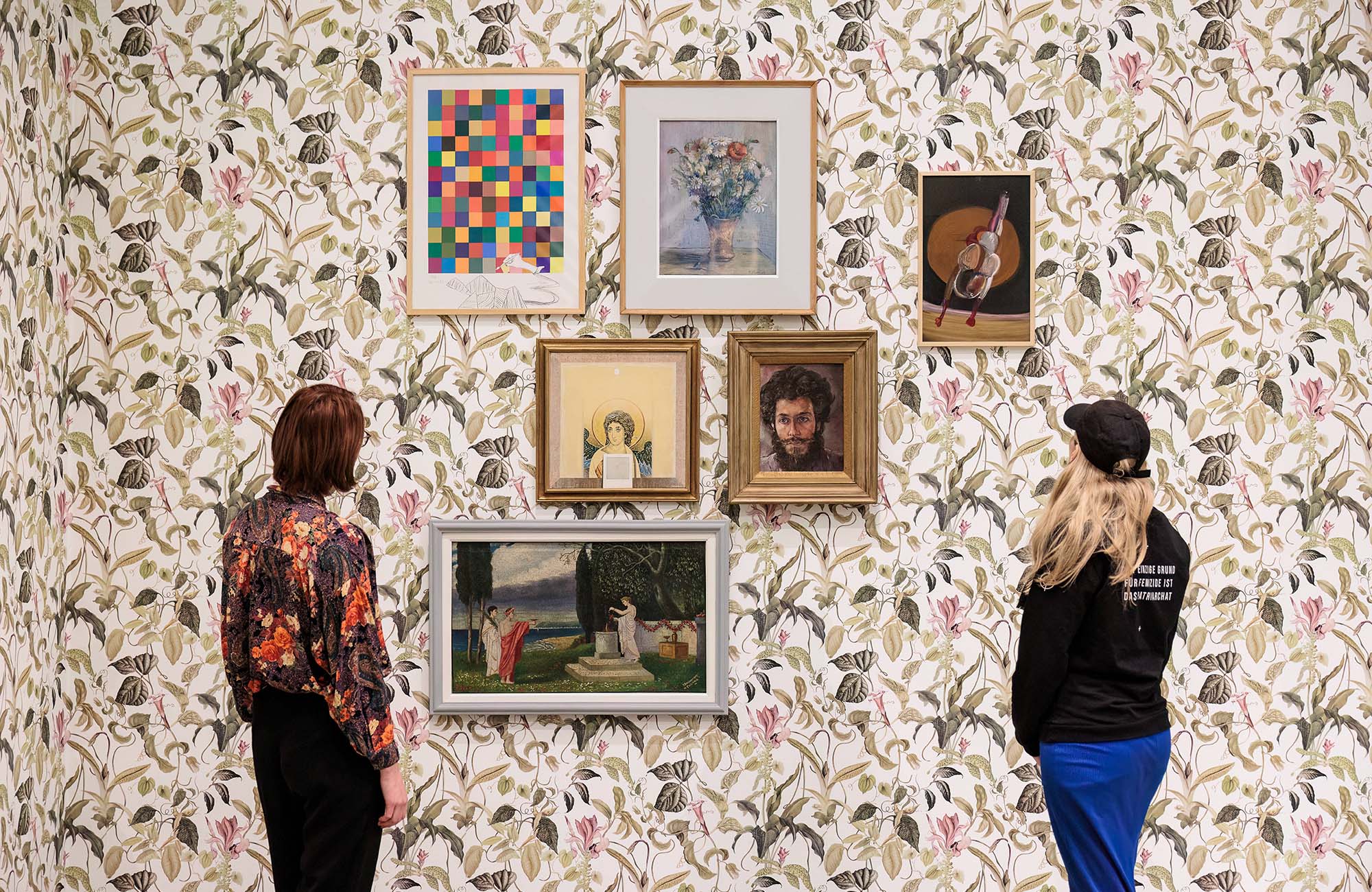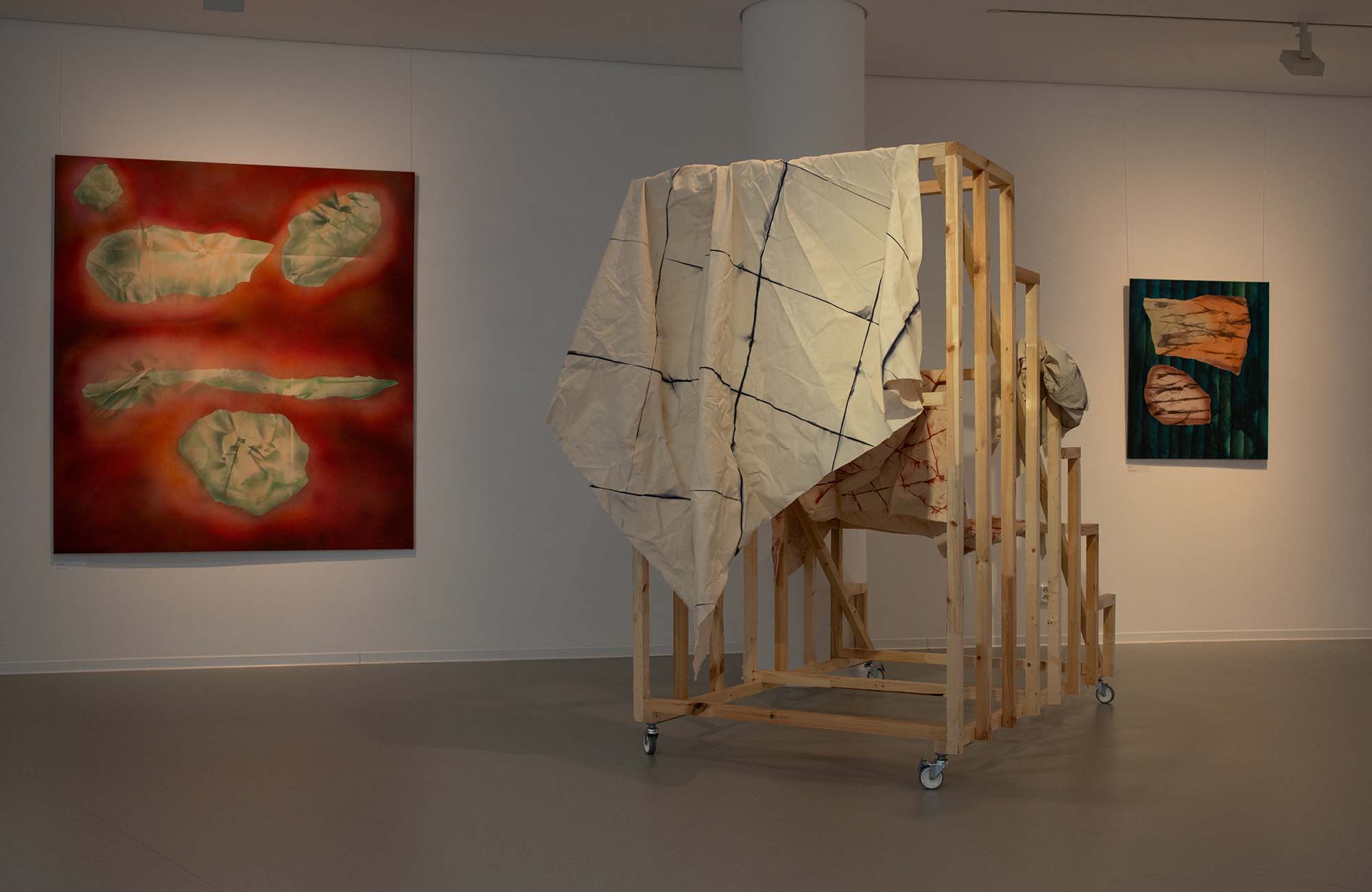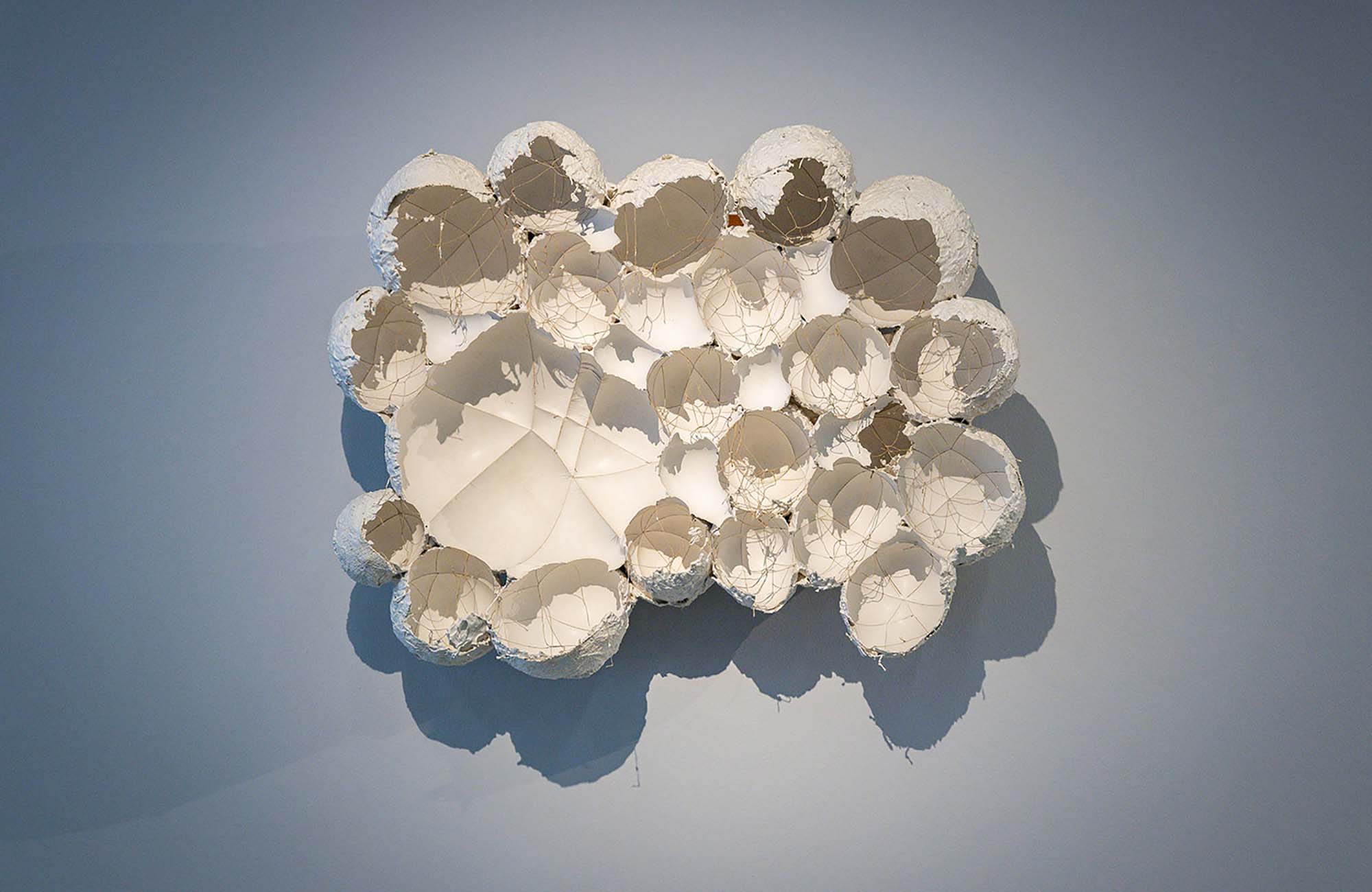
The Sense of Touch
Mária Bartuszová was able to create experimental art in a politically and culturally closed system, and her art was against the closed structures of Communist authority. She deserved professional recognition earlier – which she only recently received with her monograph and exhibition at Tate Modern, and with her show now at Museum der Moderne Salzburg.
With her avant-garde sculptural language, she was one of the few female artists who created an outstanding oeuvre during the totalitarian Soviet Era. Without any real links to the Western art world, she created over five hundred works, which finally received enough attention to gain contextualization.
“Influences (on creative work): Anxiety under totalitarianism and the tensions of the Cold War. The banning of abstract art under totalitarianism increased its significance.” (Mária Bartuszová, 1968)
Arriving at Mária Bartuszová’s show at the Museum der Moderne in Salzburg, we can notice that it is based on the Tate Modern’s retrospective exhibition (2022/2023) of her work. Three curators Harald Krejci, Marijana Schneider from Museum der Moderne Salzburg; and Juliet Bingham from Tate Modern curated Bartuszová’s lifelong praxis on a smaller-scale exhibition in Salzburg. Extensive surfaces, single white drops hanging from the ceiling, large plaster sculptures, and white elements that look like fountains; these are all forms of domestic pottery, which are conceptually placed in the white cube space at the museum. Aiming to finally put together the missing threads, the curators offered a more contextualized narration for the visitors, focusing on the fact that she worked in Czechoslovakia during the Socialist Era.
Going through the white spaces of the Museum der Moderne Salzburg, we can see a wide range of her works, from the earliest ones to the huge outdoor sculptures she created in the late 1980s. Bartuszová’s name may not be too exotic to Hungarian visitors, as her works are now on view at the Ludwig Museum Budapest, as part of the group exhibition titled Handle with Care (2023). The retrospective exhibition in Salzburg aims to finally offer a broader perspective on her biography, which the previous group shows lacked, such as the one at the last Venice Biennale, where her work was part of the curated selection Milk of Dreams located in the Arsenale Area. The design of the Biennale’s main exhibition was made by Formafantasma, a research-based design studio investigating ecological, historical, political, and social forces. Bartuszová’s works couldn’t have fitted better, as they showcase traces of a mysterious, almost surreal world, however, her biographical conditions were left out of the curatorial concept.
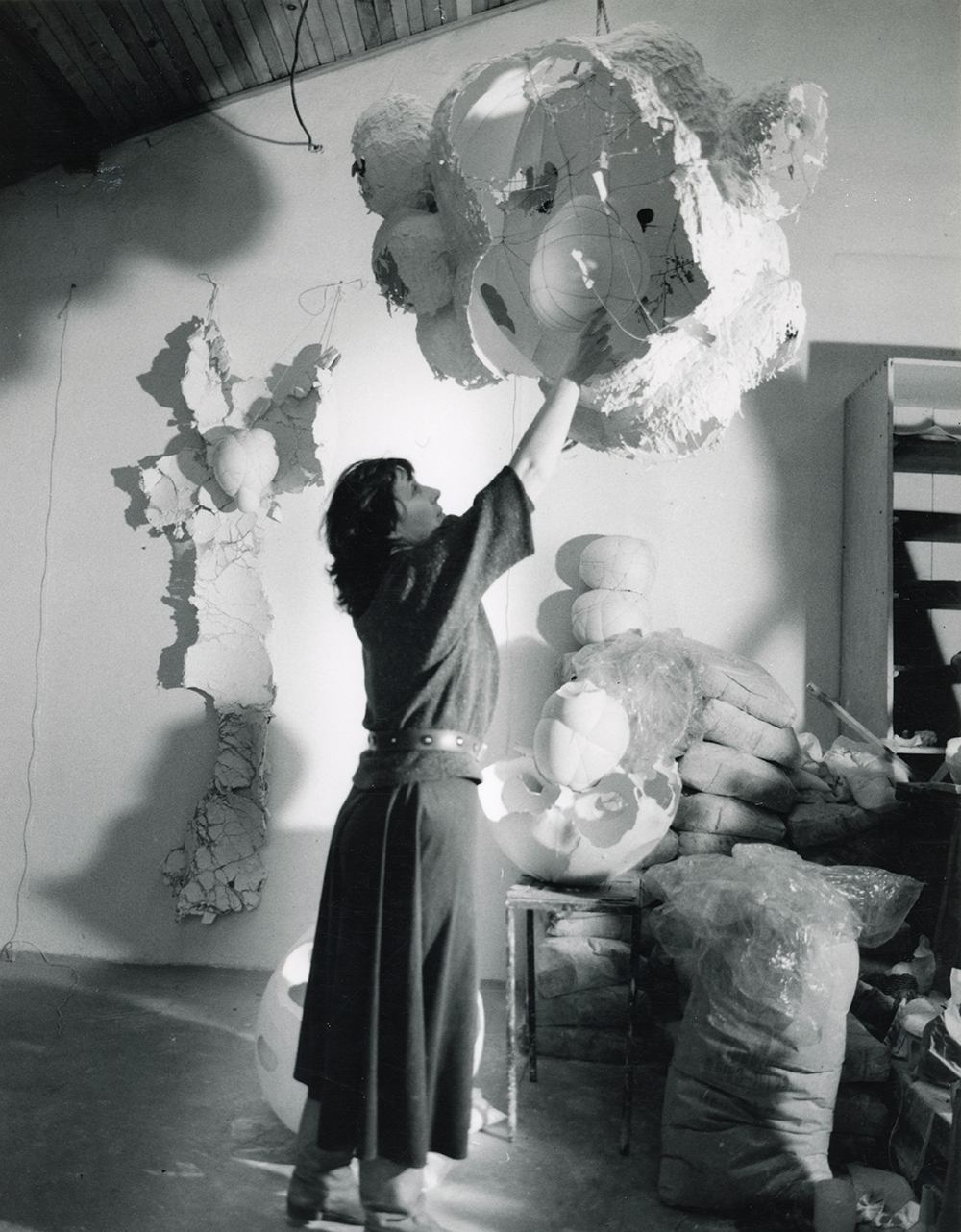
Staging the solo exhibition of her life’s work was, in fact, a very important gesture from the Tate Modern as well as the Museum der Moderne Salzburg, because her first internationally relevant event was the Documenta in Kassel in 2007. Considering that she was born in Prague but spent most of her life in the peripheral city called Košice which was part of Soviet Era Czechoslovakia, it was quite an unprofessional strategy to exhibit her artworks without a broader context and with no reference to the dynamics within her practice’s limited situation. Her later group exhibitions also followed the tendency of Documenta’s lack of contextualization, such as Les promesses du passé held at the Centre Pompidou in 2010. Particularly important in this regard was the solo exhibition focusing on her work, which was called Provisional Forms at the Museum of Modern Art in Warsaw (2014/2015), where she finally received the contextualization of her artworks with the links of her oeuvre, which, according to the press, was her only solo exhibition before the retrospective at Tate Modern.
At the Museum der Moderne Salzburg, the exhibition not only showcases Mária Bartuszová’s lifelong praxis but also reflects on the artist’s process: how she developed a unique language of sculptural forms, despite Socialist Realism dominant in the region and the artistic milieu of her times. Aiming to present her lifelong praxis, the exhibition has a special focus on the phase of her praxis spanning from the earliest experimental works until her most important series from the 80s called Endless Eggs. Fertility, motherhood, and gender themes led her to make her unique series mostly out of an affordable ingredient: plaster.
Born in Prague in 1936, she moved to Košice after finishing her studies at the Academy of Art and Architecture, where she started her career as an artist. Although she worked in an era where the scene was male-dominated and minimalism was considered lucid, as it was far from Socialist Realism, Bartuszová’s studies of the sense of touch were more layered than we had ever thought; it was also about imagination and reflection on human existence. Her expanded sculptural techniques are still universal: and her non-figurative sculptures are open to be encountered by all of the visitor’s senses. Her name only became better known posthumously, since during her life she had to work behind the Iron Curtain. With her husband, sculptor Juraj Bartusz, she took part in the so-called cultural modernization of the city of Košice with public artworks.[1]
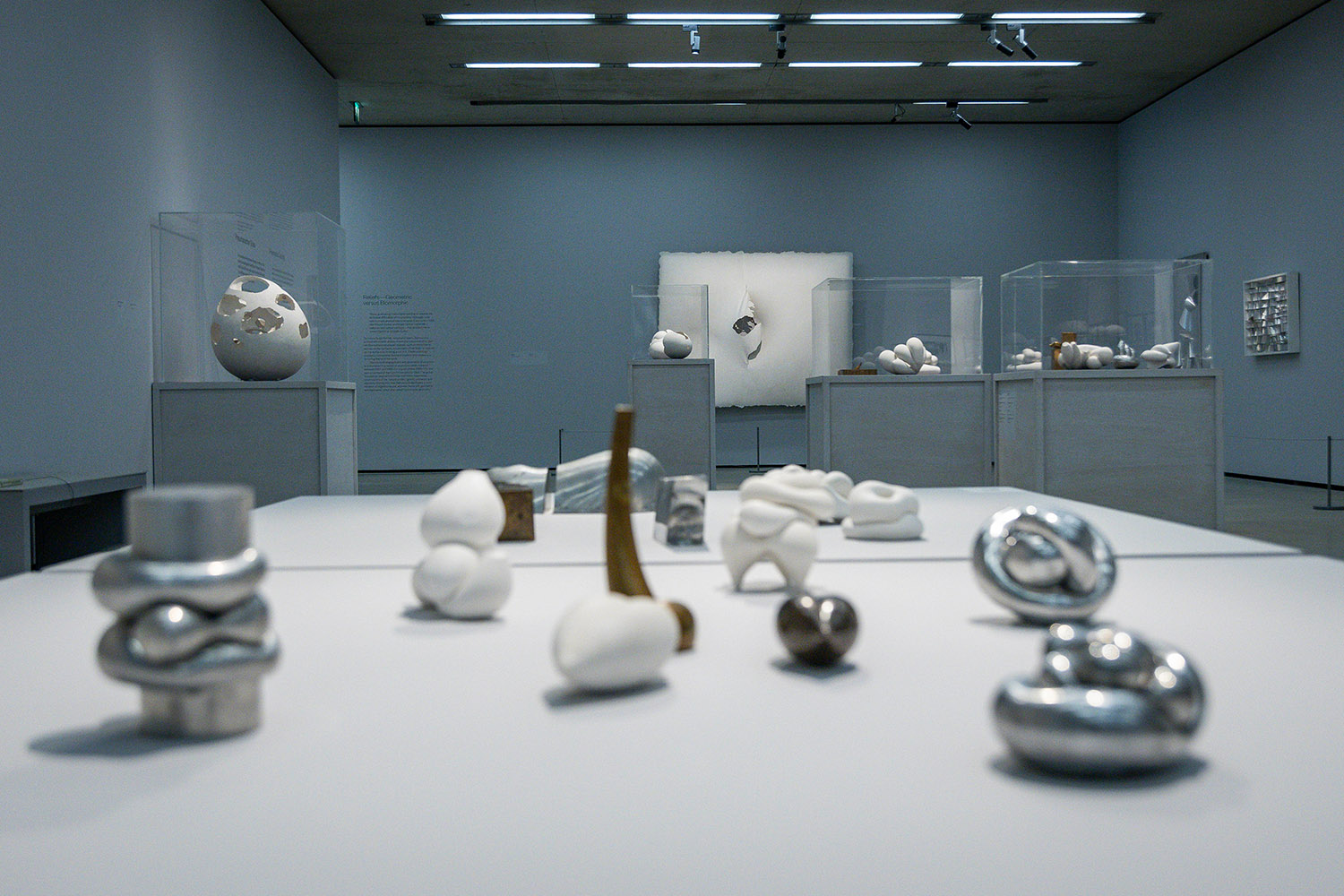
During her life, it was not easy for her to survive, especially since she was simultaneously a mother, a wife, an applied artist, and an experimental sculptor. These roles sometimes created contradictions, and maybe that is a reason why she worked with an affordable material (plaster) on a new term for domestic pottery as she encouraged a playful, sensual experience with her sculptures. Firstly she used fragile white plaster, then later on she shifted to using a diverse range of materials, including bronze, and silver. Fertility and motherhood are central, but there are hidden themes in her works: philosophical themes, such as existence. These topics were especially prevalent in the Endless Eggs series which she began around 1984 by creating pure ovoid forms. These perfect shapes were then visibly subjected to artistic interference by being squashed, deformed, and bandaged. These moulded, partly open, shell-like tactile forms often deal with negative volumes as well as stigmatization. This is why her works from this period might remind us of Louis Bourgeois’s latex body-sculpture dress from 1975.
Her biggest inspiration was the Romanian-French sculptor Constantin Brâncuşi, who, with his androgynous figures and abstract language, became the master of the young Bartuszová’s biomorphic minimalism. Her abstraction was not the only the heritage of Brâncuşi, as her most important inspirations were Joan Miró and Henry Moore. Bartuszová’s sensitivity to the material is pervasive in all the shown artworks at the Museum der Moderne Salzburg.
Most of Bartuszová’s artworks are made from plaster, something she could easily afford when she was a young mother working at home in the 1960s. Most probably, the idea of using balloons also came from her kids. This was the input that led her to create a new aesthetic form: egg-like, nongeometric, erotic, human-body patterns, inflated, and imperfect sculptures, simply formed by gravity. Bartuszová was among the first women artists, who pointed out that contemporary art is not so far away from children’s universe. Surprisingly, she became a master of plaster not in the ceramics and porcelain studios of the Academy of Arts and Architecture and Design in Prague during her student years, but much later on while she started to play with her daughter; she realised that by pouring plaster into an inflatable ball she could create a pure round shape. She named it gravistimulated casting.

She produced various versions by trying out new rubber forms, such as balloons and condoms. Loving to play with the structure of the material, she often experimented with other materials in combination with plaster, as can be seen in her largest floor sculpture. Made of wood, the sleepers form an X, creating an unconventional contrast with the abstract plaster forms. The installation, named Untitled (1986–87) looks like a playground seesaw made for children. The form can be interpreted as a negation or contradiction and can be seen as a socio-political comment – now placed in the spotlight of the retrospective exhibition.
To understand her working conditions, we need to take a closer look at Communist Czechoslovakia, which, during the 60s, was under mild censorship (until the 1968’s Soviet intervention), enabling artists to explore the avant-garde movements outside of the confines of Socialist Realism. The three-dimensional shapes of Bartuszová were linked to the Western movements, which she was far from not only geographically, but with equipments and working condition-wisely as well. Her biomorphic shapes did not only go against the Socialist Realist trends but offered an alternative way to think about her environment. The only way to escape the totalitarian regime was to explore nature and the universe of children. She used her courageous, experimenting method as well to find alternative ways to combine plaster with natural ingredients, as we can see at the second part of the exhibition display. On one hand, there was nature and life itself in her series from that period, while she created minimalist objects, or landscapes (as she called them) were she used the natural ingredients in a completely different way. The artworks not only combined natural elements, but formed an outstanding narrative about nature and how we humans see and take care of our environment. The series also can be linked to challenges in her marriage. Nature was her therapeutic and meditative space, and the theme of contemplation can be noticed in her incorporation of trussed, bound, and compressed forms.

Later she evolved her techniques with plaster into a new method: pneumatic casting. She combined everyday, often rustic, industrial materials such as strings with plaster. Although her space was limited (due to both the regime and her financial situation), her spirit of experimentation was not confined. This attitude permeates the whole exhibition and, especially the uninflated balloon sculptures. The Untitled Sculpture (1963-1964) from Tate’s collection is an already well-known example of her earlier experiments, during which (driven by a child-like creative impulse) she transgressed all the rules and regulations of academic sculpture, and created different ways to represent the human body. We can see eggs poured and stuck to the wall, and a huge teardrop hanging from the ceiling, recalling Zsófia Keresztes’s After Dreams — I Dare to Defy the Damage which was also exhibited at the Venice Biennale, aligning with the title of Leonora Carrington’s book.[2]
Interested not only in material but the therapeutic applications of art, Bartuszová created a series of multi-part sculptures, which were designed to be explored by different senses (mostly by touch) and to be assembled as puzzles. The experience of tactility was primary: she created sculptures that enabled children to learn to differentiate between geometric and organic forms, to recognize their emotional significance, and to develop their aesthetic imagination. The sculptures exhibited in Salzburg were originally placed on the desks of pupils at the Elementary School for the Visually Impaired in Levoča as part of workshops held there between 1976 and 1983. The objects on display show signs of time and touch, it’s visible that their surfaces have been touched by many, creating a different dimension of observation.
She introduced her so-called puzzles at her workshops for children who were blind or had visual impairments in collaboration with the art historian Gabriel Kladek. The children, who were the only visitors to her unique workshops, got a chance to observe art, which for most of them was probably for the first time. They engaged with the artifacts by touching their various forms and textures. The haptic aesthetic imagination of the children she encountered defined her abstract sculpture: the external world met the internal, as we can witness via Gabriel Kladek’s artistic photos of the workshops.
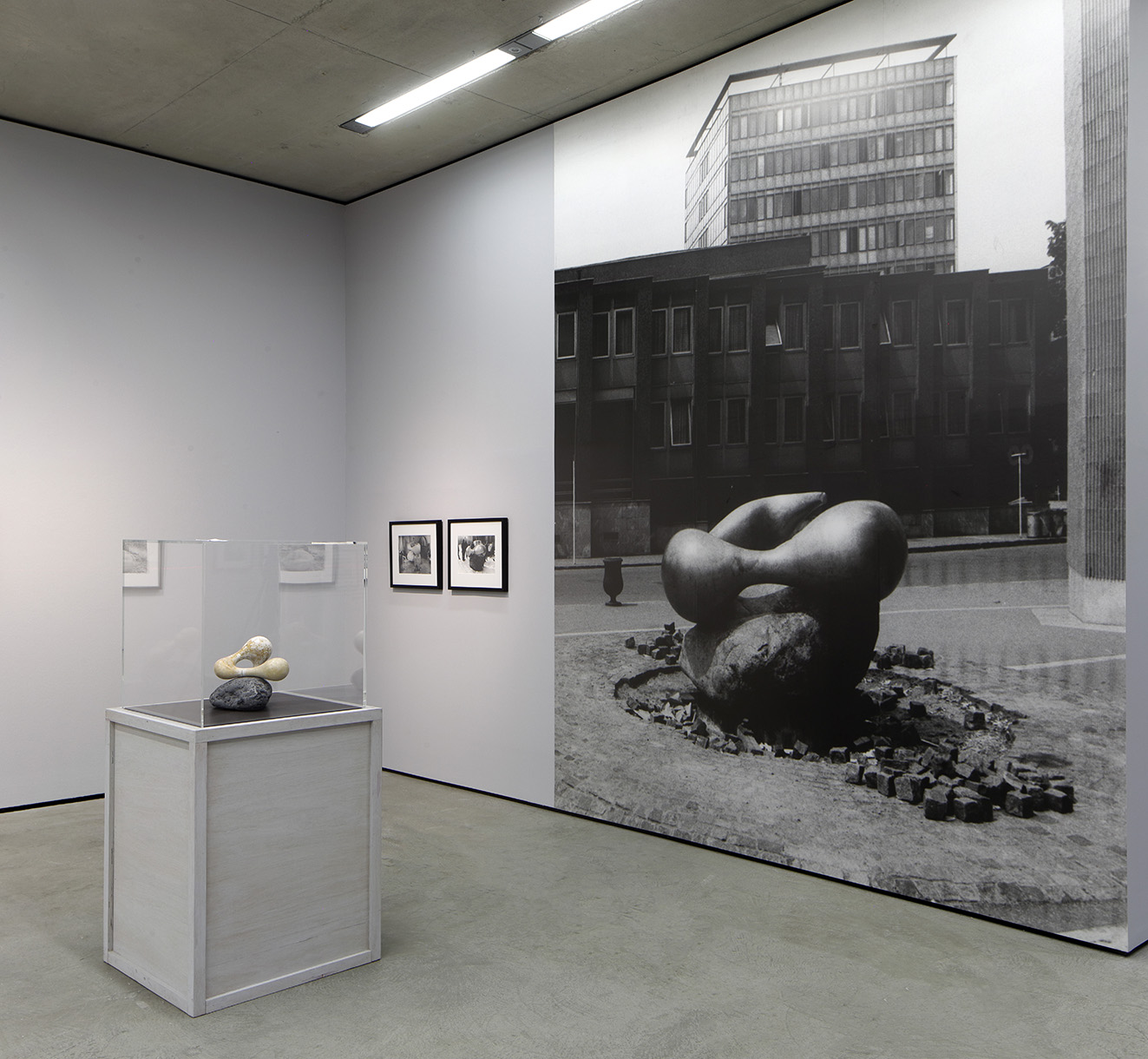
The booklet of the exhibition mentions that Bartuszová was interested in the relationship between scientific theories and ancient traditions, which also shaped the Western avant-garde movements. Just like the Western sculptors, she studied the literature on psychoanalysis, social psychology, and natural sciences. Like most of her Czechoslovakian colleagues, she felt drawn to spirituality; her library was full of books about Chinese and Japanese art and culture, Zen Buddhism, and East Asian philosophy, among which self-published copies of texts censored in the Soviet-controlled countries of the Warsaw Pact were found. These inter- and multidisciplinary studies all contributed to her experimental body of work by which she unconsciously followed the tendencies of the neo-avant-garde scene worldwide.
Furthermore, the exhibition highlights how artists of the 60s and 70s were generally dependent on the totalitarian regime’s commissions, thus Bartuszová became a member of the Artist’s Union in 1964. Despite the fact that her work was not underpinned by any ideological objectives, she continued to receive commissions for decorative elements of buildings, monuments, playgrounds, and fountains sponsored by the state. These public projects were not only important sources of income, but also an outstanding opportunity for her to share her ideas with a broader audience and for her to realize her ideas on a monumental scale. Rain (1963) is an excellent example of these commissions; she also created the Bronze Fountain for the Institute for Physically Disabled Children in Košice (1967–71).
Her futuristic applied artworks and designs for children are in dialogue with Oscar Hansen’s Open Form concept.[3] For example, Children’s Climbing Frame (1964-1965) combined metal with plaster: here we can see not just the futuristic design relations, but it also aims to develop the imagination in early childhood. It could be easily seen as a tool to extend the skills of the youngest users.
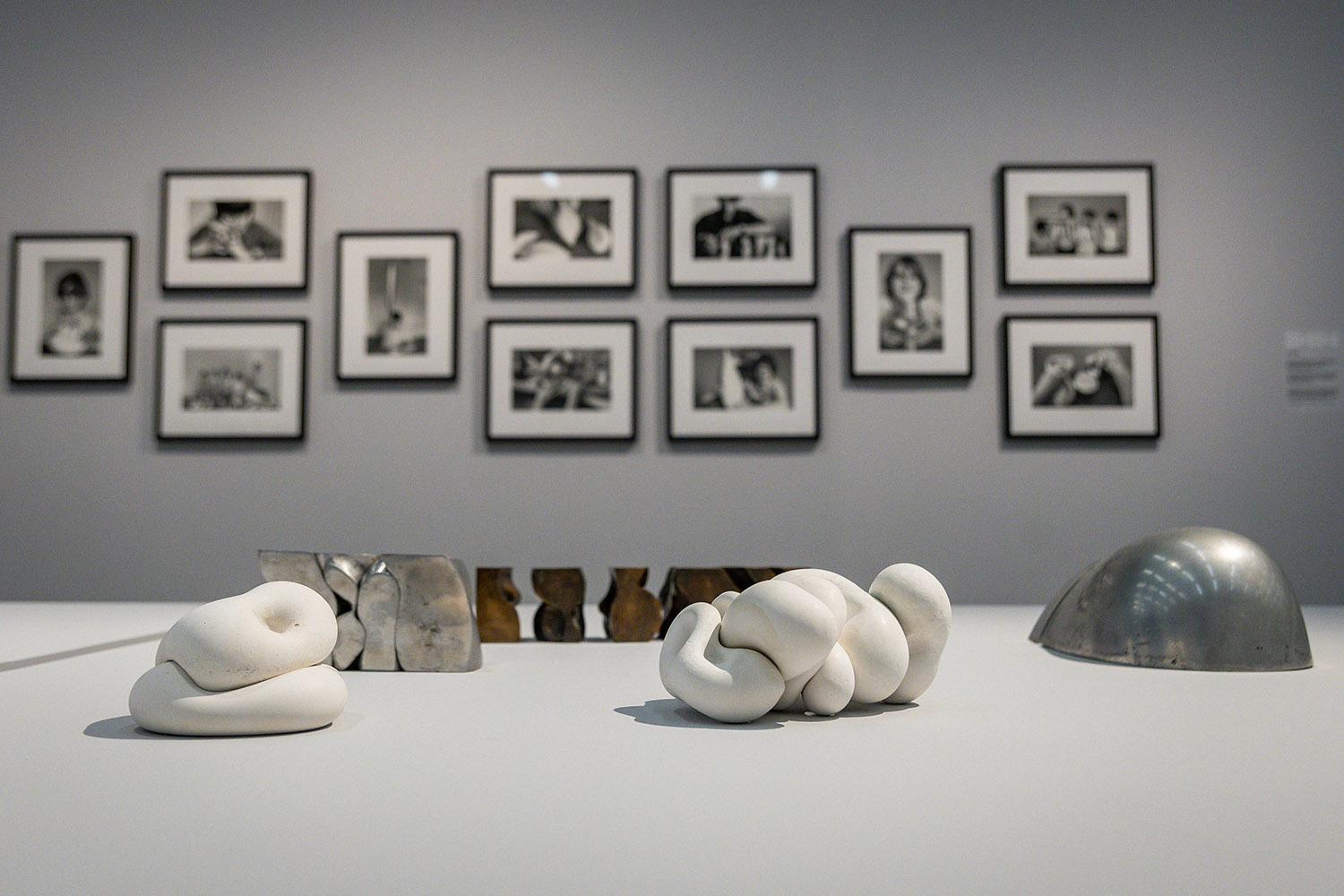
In 1963 Bartuszová designed playgrounds, as in the 1960s the Socialist regime opened many new kindergartens. However, as the exhibition highlights, only a climbing frame and slide were completed in 1970, and the other models were never realized. Her sculptures such as Rain (1963) or Untitled (Drop) (1963–64) showcase this artistic period, as they were both exhibited at the first Triennial of Slovak Sculpture in Pieštany in 1967. Raindrops, seeds or eggs, parts of the human body – we can observe something different in each shape. As she allowed the balloons to burst, she recreated cocoons and nests, simply using plaster. We were also able to take a closer look at her outdoor experiments and her studio practice where she produced tactile plaster forms often inspired by nature. Most of her works seem in the sense of abiding by the logic of the Earth, combined with ingredients she found when she played with her kids outside.
The exhibition aimed to create a platform to gain a closer look at Mária Bartuszová’s cultural-historical environment and her abstract biomorphic sculptural language through the lens of her monograph, which coincides with the retrospective exhibition at Tate Modern, London. Her tactile, futuristic sculptures are worth knowing, especially since her artworks can be seen as symbols of relationships between humanity and nature, which is crucial to rethink nowadays as we live in constant environmental uncertainty. Moreover, the exhibition not only provides an insight into Bartuszová’s lifelong intensive research into the possibilities of capturing the essence of nature but also provides an interactive space, called Engaging the Senses, where visitors can try out aspects of Bartuszová’s workshop and discover her processes, techniques and tools that she used in her workshops with visually impairment children. The exhibition shows us how she not only developed a new sculptural language to represent the human body – but also found a resilient way to experiment and create despite the oppression of Communist authority.
Mária Bartuszová (curators: Harald Krejci, Marijana Schneider, Juliet Bingham), Museum der Moderne Salzburg, 21. 07. 2023. – 07. 01. 2024.
Photos: Museum der Moderne Salzburg
Proofreader: Martha Kicsiny
[1] In the 60s, when Bartuszová moved to Košice, the city was developing as a cultural and industrial hub, with the Communist programme of modernisation creating new mass housing projects and public buildings. Many of these sites offered opportunities to make public artworks, and Bartuszová secured a number of official state-funded commissions.
[2] The title of the Venice Biennale was The Milk of Dreams, which was originally the title of Leonora Carrington’s book. As the chief-curator Cecilia Alemani says, “the Surrealist artist [Leonora Carrington] describes a magical world where life is constantly re-envisioned through the prism of the imagination, and where everyone can change, be transformed, become something and someone else. The exhibition takes us on an imaginary journey through metamorphoses of the body and various definitions of humanity.”
[3] Oscar Hansen was a professor at the Academy of Fine Arts in Warsaw (now Akademia Sztuk Pięknych). Hansen thought about open systems and utopian spaces both as an architect, and as a teacher he carried out pedagogical exercises with his students that were in line with neo-avant-garde and fluxus trends. The exercises aimed at developing imagination and critical thinking, and appealed to architectural solutions as a way to imagine a democratic society.

